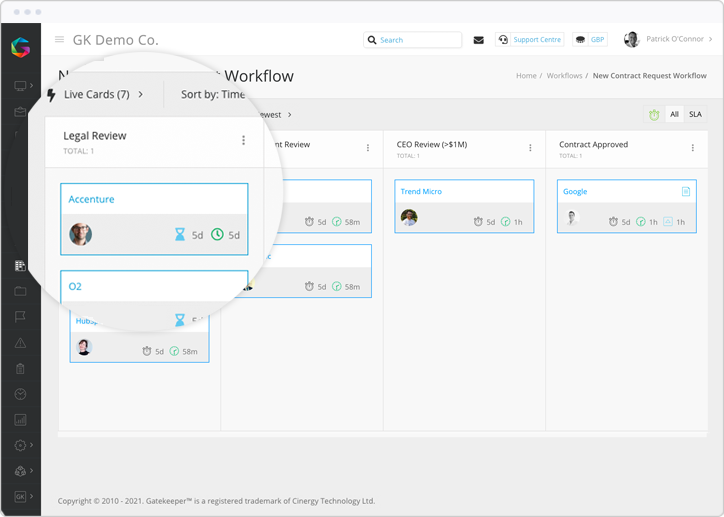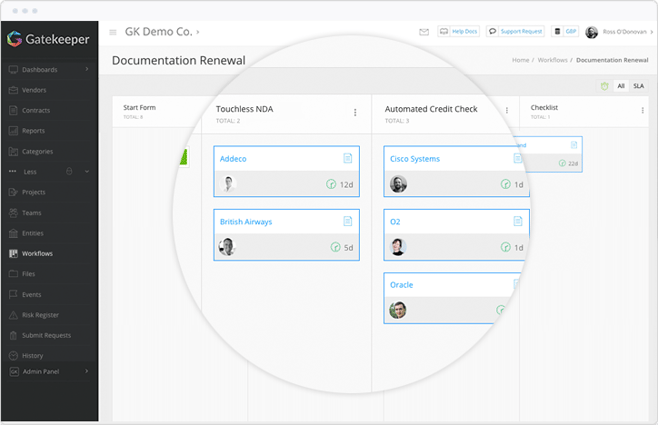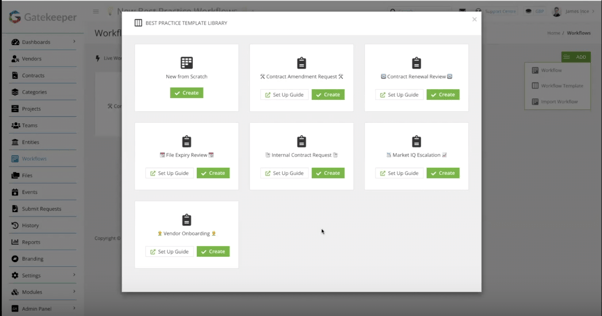The need for document automation software has never been clearer. According to EY Legal, Law department leaders report that one out of every five in-house counsel hours is currently spent on low-complexity, repetitive or routine tasks, with 87% confirming that their department spends too much time on these tasks.
When it comes to contract management, Legal teams and manual work no longer go hand-in-hand. A lack of automation:
- Overburdens Legal teams with administrative tasks
- Prevents them focusing on strategic, high-value work
- Creates bottlenecks as Legal is often responsible for chasing other departments
- Causes valuable time to be lost as Legal search for contracts
- Allows fragmented processes and a lack of visibility to remain a common standard
Whether it's generating NDAs, dealing with new requests from other departments or sending contracts for signatures, the Legal team is always in demand. When these activities are completed manually, it's easy to see why teams are spending more time on areas that aren't related to their intended role.
If you're a senior legal professional with concerns over where your team are spending their time, or work in legal ops and are tasked with enabling your team to perform at their best, document automation software can benefit you and your team."
Let’s take a look at how implementing this technology helps Legal to contribute at a strategic level.
What Is Document Automation Software?
Document automation software is technology that eliminates the need for manual document creation. In the context of contract management, the software allows high-volume agreements such as NDAs and MSAs to be generated automatically.
This saves Legal teams valuable time, reduces their administrative workload and drives greater internal efficiencies. Depending on your choice of software, businesses can also go beyond automating document creation. Other document-related tasks can be automated, such as routing an agreement for approval or storing it in a central repository.
How to get the most from document automation software
A world where the Legal team has time to focus on what truly matters is the ideal state. But if your business currently doesn't have any technology in place, there's work that needs to be done before implementing document automation software.
To get the most value from a new solution, sit with your team's Legal counsels to define:
- What current processes look like and where bottlenecks occur
- Where they are spending time unnecessarily
- Which activities have the lowest value but highest concentration
- Which activities could be executed by other teams without causing disruption
The key thing to remember is that technology shouldn't be used to automate processes that aren't working."
Work needs to be done before its implementation to map out correct processes that will decrease time-to-contract and free up time for internal teams.
While Legal input is essential. it's important to identify how the software can be used and benefited from by other stakeholders. Any sort of technology that improves contract management should work for the entire organisation.
gives time back to the Legal team by empowering other stakeholders throughout the business."
By giving other teams the ability to generate pre-approved agreements, Legal can remain hands-off until their expertise is truly required. This minimises disruption for in-house counsels and GCs. Administrative work that doesn't require specialised knowledge, such as sending a contract out for signature, can also be reduced through automation.
What features should document automation software offer?
1. AutoActions to drive internal efficiencies
Once processes have been mapped out, they can be automated and visualised in Gatekeeper’s Kanban Workflow Engine. This allows you to see which phase a document is in, who has responsibility for it and any actions that are still required. CLM software helps your business to automate contract creation, drafting and eSigning by assigning actions each time a card passes to a new phase.
AutoActions can be used at the contract and vendor level. This helps to streamline time-to-contract, with less time being spent on creating a new agreement every time a new third-party is introduced to the business. Automatic contract creation is built upon pre-approved boilerplate templates that don't require further input from Legal.
Contracts can be created and sent without ever leaving the document automation software - creating an auditable history as it progresses."
Other AutoActions can be applied at the Negotiation and Sign-off stages. A contract draft can be generated in a Microsoft Word format from a contract linked to a Workflow card. Once the draft is agreed upon, it can be auto-converted to a PDF format and published.
Once achieved, the agreement can be AutoSent in this format for an eSignature. No need for endless paperwork or to store multiple versions of the same contract in silos.
 Remove siloes by automating your processes with the Kanban Workflow Engine
Remove siloes by automating your processes with the Kanban Workflow Engine
2. Self-service contracts at scale
AutoActions can be used selectively based on whatever suits your business the most. But the most powerful document automation software will allow your business to automate entire contract lifecycles. This enhances the daily working experience for all business units and creates truly Touchless Contracts, where Legal teams don’t need to be disrupted.
The ability to self-service contracts at scale doesn't just reduce administration for the Legal team. It also gives more freedom to teams such as Procurement to progress high-volume agreements, such as NDAs.
These agreements can also be automatically sent to new or existing third-parties via a Vendor Portal. Not only does this streamline the onboarding process, but it also requires vendors to contribute to the process.
Self-service options allow businesses to delegate data input to third-parties. In doing so, the administrative burden often placed on internal teams can be redirected. By ensuring vendors input their own data:
- Complete vendor records can be generated without manual intervention
- Compliance can be automated and vendors prompted to update information
- Time and resources no longer need to be dedicated to chasing vendors
 Remove the manual burden of repetitive NDAs with Touchless Contracts
Remove the manual burden of repetitive NDAs with Touchless Contracts
3. Best practice contract and workflow templates to prevent repetition
How much time does your Legal team spend creating the same low-volume contracts? NDAs and MSAs are typically high-volume and can distract the Legal team from contributing to the overall strategy.
Repetitive work can quickly become mundane, leaving Legal teams feeling frustrated."
With document automation software, you can generate contracts with unlimited Microsoft Word Templates. From NDAs to new employee contracts, time can be saved.
Contract generation is supported by a clause library - created and defined by your Legal team and contract stakeholders. As the boilerplate clause library is pre-approved, other teams can generate contracts without disrupting Legal. This allows for more seamless working processes and progress without distraction.
Gatekeeper also provides best practice templates for different workflows. Even the most complex renewal process can be improved with automation. These templates allow your teams to hit the ground running and standardise contract processes each and every time they are executed.
By standardising your processes and adhering to best practice templates, compliance becomes more manageable. All teams know what actions are expected as a document progresses through its lifecycle - and who should be responsible. The right software will also provide a complete history of any actions taken - important for businesses that need to prepare for audits.
 Use Best Practice Workflow Template to save time and automate processes
Use Best Practice Workflow Template to save time and automate processes
Setting up best practice workflows and leveraging powerful features has never been easier. Gatekeeper offers instantly configurable templates, along with set-up guides, that help your business to get started - without starting from scratch. Onboard vendors, escalate risks and review contracts in a timely manner with a few clicks.
Wrap Up
Document automation software is a great investment if you’re looking to build in more visibility and control throughout your contract management processes. It has multiple benefits and, with the right features, will allow your business to:
- Streamline your processes
- Free up the Legal team
- Empower other business units
- Focus on contract management rather than administration
- Drive internal efficiencies
Any technology that you implement should benefit the entire organisation. Although freeing up the Legal team will help to save time and create more value, document automation software will also provide other business units with greater autonomy.
This encourages enhanced productivity and collaboration, which will all lead to better outcomes. If you’re ready to learn more or to introduce automation to your business, contact us today.

.png)
.png)
.png)
-4.png)